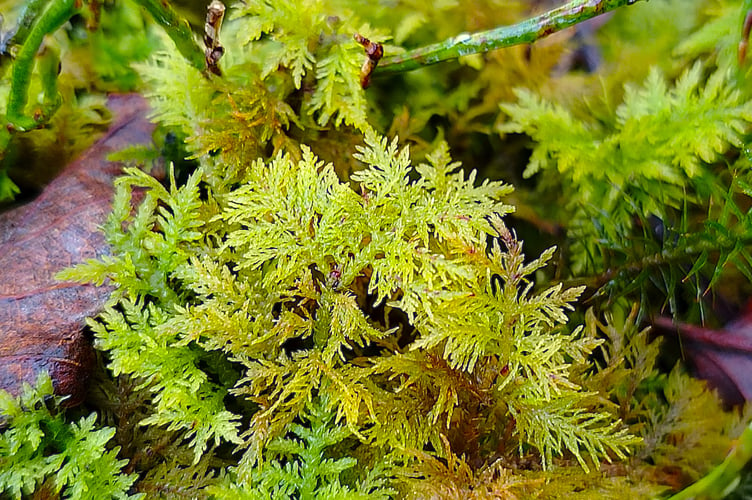MOSSES and liverworts form part of a large group of lesser plants known as bryophytes. These plants have no true roots and as they lack vascular tissue (the means to conduct nutrition to every part, as we have veins), they simply absorb water and nutrients from the air through their surface.
Bryophytes do not have flowers but they do have tiny stems and often leaves too. The plants are very small, rarely exceeding 15 centimetres, with many just a centimetre or so high.
They reproduce by means of spores, as fungi do, and usually prefer moist habitats, although some species can survive in drier environments. Mosses are always leafy, but not many liverworts have leaves. Liverworts are named for their leaf-like lobes, thought to resemble a lobed liver.
There are some 25,000 species of bryophyte worldwide of which about 1,100 occur in Britain.
.jpeg?width=752&height=500&crop=752:500)

Exmoor is particularly rich in these plants - it has well over 400 bryophytes including some nationally rare species.
In fact, thanks to its clean, clear air and rich variety of habitats, Exmoor is a noted location for bryophytes. Places like Horner Woods, which form part of the area known as Atlantic woodlands, are of international importance.
Atlantic woodlands are natural or semi-natural woodlands, only found in western Britain and Ireland, where the climate is mild and wet due to the influence of the Gulf Stream.
These conditions are ideal for a range of important mosses and liverworts. Atlantic woodlands have been compared to tropical rainforests where there is also luxuriant growth, but they are considered a type of temperate rainforest, an increasingly rare habitat.
.jpeg?width=752&height=500&crop=752:500)

The quantity and frequency of rainfall; cascading streams and rivers, clean air and a wild landscape with crags, ravines and boulders beneath an extensive tree canopy - all these make the Atlantic woodlands of western Britain an internationally important habitat for mosses and liverworts.
Woodland mosses and liverworts are an excellent indicator of the quality of the habitat and play an important role in the woodland ecosystem.
It is possible to quickly become familiar with some of the commoner mosses and liverworts found in woodlands. They can be found all year round, but winter is a good time to look for them, as they are revived by the damp atmosphere and no longer hidden by surrounding vegetation.
Some species are quite distinctive, others will need a hand lens to reveal their finer features, such as whether a moss has its leaves in two or more rows. All mosses have a line in their leaves but some also have a thickened leaf margin.
Some mosses have a flattened growth form and look a bit like leafy liverworts but if you look carefully you will see that they have many rows of leaves, a helpful distinguishing feature. Liverworts have neither flower nor stem and usually lack leaves.
Although bryophytes are mostly known by their Latin names, many of them have been given descriptive English names which to me bring them to life.


Amongst the commoner and easier ones to identify are Thuidium tamarscum (Common Tamarisk Moss), Dicranum scoparium (Broom-Fork Moss), Rhytidiadelphus loreus (Little Shaggy Moss), Plagiothecium undulatum (Waved Silk Moss), Hylocomium splendens (Glittering Wood Moss).
Look for them in the woods and river valleys of Exmoor. Some of the most prolific areas are Watersmeet and the East Lyn Valley; Malmsmead and Badgworthy Water, by Hillsford Bridge and Hoaroak Water; Horner Wood and the East Water Valley and the woodlands of the Barle Valley.
References: Bryophyte Atlas of Exmoor National Park by Irene G. Perry, Plantlife Field Guides, Guide to mosses & liverworts of woodlands, Forest Stewardship Council UK
For more information about the work of the Exmoor Natural History Society visit www.enhs.org.uk
.jpeg?width=752&height=500&crop=752:500)



